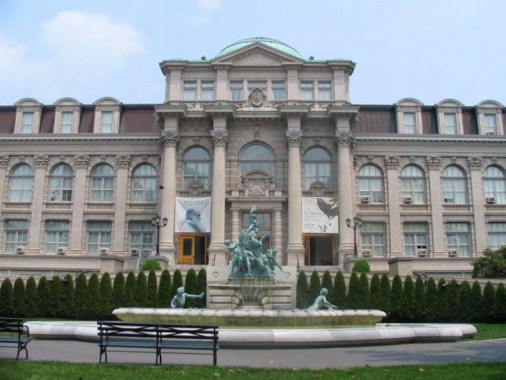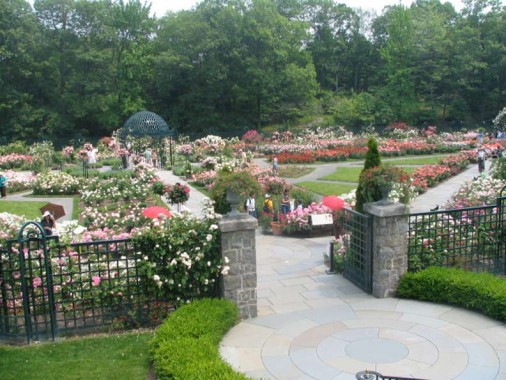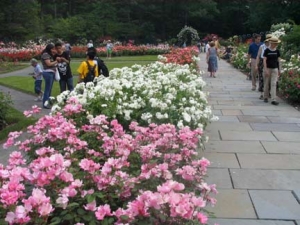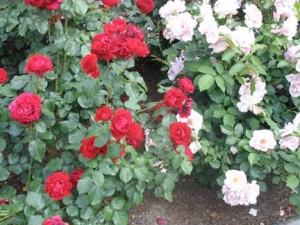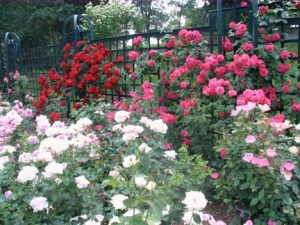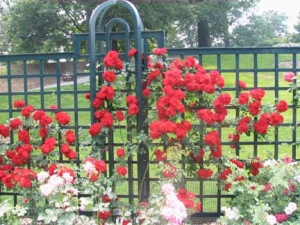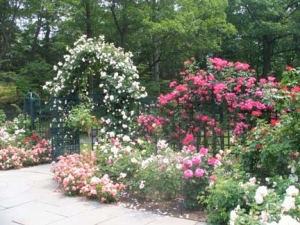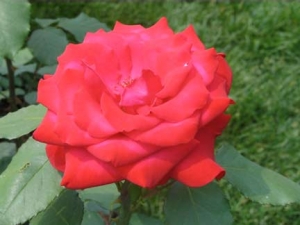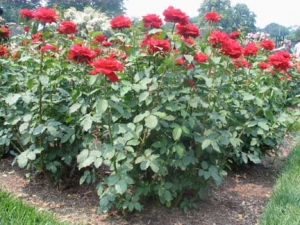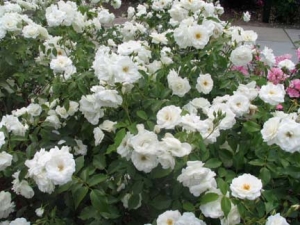Putting a temporary end to my Bronx slump (from summer 2007 through June 2008 and counting, I’ve only been in the Bronx about 3 or 4 times) I made a quick trip to the New York Botanical Garden to see some roses; I put that in the most basic of terms, since roses are my favorite flowers and what’s more, I prefer them in traditional deep red and white. There are hundreds of breeds of roses: but in true plebeian fashion, when asked my favorite variety, I invariably say: the red and white ones, please.
The city, by 1891, had allocated 250 acres in the Bronx’ central section between the Norwood and Bronxdale regions to be used as a botanical garden. It’s developed into one of the world’s premier garden showplaces and inspired similar gardens in Brooklyn, Queens and Staten Island. Note that it’s not called the “Bronx Botanical Garden” since the Bronx didn’t become a separate county until 1914.
Upon handing over your $20 (I’m not being flip and do not begrudge the fee for the upkeep and maintenance of a NYC treasure) and entering the grounds you spot on the left a massive Beaux-Arts building, known formerly as simply the garden’s Museum Building but currently called the LuEsther T. Mertz Library (named for a benefactor, the wife of the founder of Publishers Clearing House, Harold Mertz, who became a philanthropist: a good deal of PCH’s profits still go to charity). The building dates to 1902 (the same year the famed Enid Haupt Conservatory was built). I was attracted to the object in front.
The bronze Lillian Goldman Fountain of Life was sculpted in 1905 according to the design of Charles E. Tefft.
Though your webmaster has never learned to swim and I haven’t eaten much seafood since DeMarco’s closed in Bay Ridge, taking its Friday fish and chips special with it, I’m invariably attracted to fountain marine scenes and I am a regular at the Coney Island Mermaid Parade; go figure.
Getting a close look here, it depicts one wild scene. A small child (known as a putto; Eros is often depicted thus and this may indeed be he) assisted by a nymph and a seagull are attempting, unsuccessfully, to rein in a pair of sea horses pulling a chariot. We know they’re sea horses because, instead of hooves, they have fins. A merman and maid are on hand to express surprise and shock at the proceedings, and play their parts well. Some crabs and other seafood scuttle about.
Turning our attention from scales to petals, a quick tram ride left us at the Peggy Rockefeller Rose Garden. A 2007 New York Times article provided the lowdown on one of NYBG’s most beloved June attractions:
The setting of the rose garden, to the southeast in the Botanical Garden where it is bordered by the Bronx River Parkway, is a natural bowl just down the hill from the picturesque Stone Cottage, which dates to the mid-19th century, when the surrounding land was part of the Lorillard estate. The slopes of its margins are punctuated by weathered outcrops of Fordham gneiss.
There in 1916, at what is believed to have been the site of a Lorillard garden and pond, the current rose garden was planned, along with its fencing and gazebo, by Beatrix Jones Farrand, a niece of Edith Wharton and the most fashionable landscape designer of her era…
In the 1980s David Rockefeller donated $1 million in honor of his wife, Peggy, to renovate the rose garden, creating new gates, fencing, walkways and a gazebo, all following the Farrand plan; it opened to the public in 1988. (It was renovated anew in 2007.)
The Rockefeller Garden now displays more than 3,000 rose plants including exquisite antique roses, modern hybrid teas, floribundas, shrub roses, medicinal and miniature roses. Red and white ones too. The garden has a planting area of over 19,000 square feet.
The rose has been cultivated from ancient times and besides providing garden decoration, its fruit, the rose hip, is used for food, its oil for perfume, and rose hips are also used in teas.
Rose petals are described as pinnate, or arranged around an axis. The stems often guard themselves with sharp thorns, or more properly, prickles. Nevertheless roses are often devoured by deer. They are mostly pollinated by bees, and the rose population will suffer if the bee population in the USA continues to shrink as it has been doing.
Farewell to the Rock Rose for now, but many roses rebloom in October.
6/16/08


